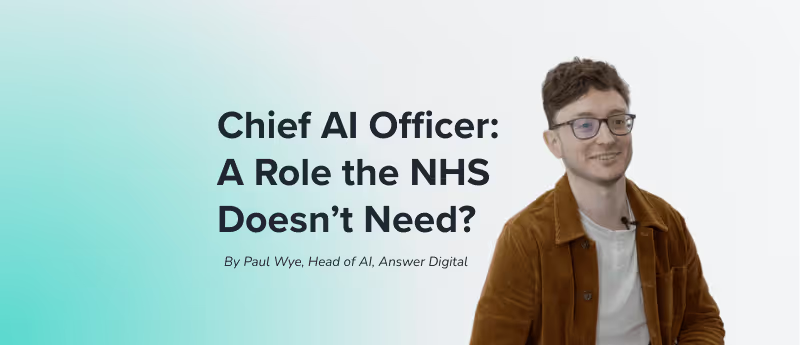Look behind the lecture Zhiyong Xie explores the state of AI drug safety research and development
Look behind the lecture Zhiyong Xie explores the state of AI drug safety research and development

In this interview with Zhiyong (Sean) Xie of Pfizer (NY, USA), we discuss his recent talk at the AI Drug Discovery & Development Summit (16–17 August 2022, MA, USA), where he discussed AI applications in drug safety studies in detail. We explore how Sean’s interest in AI began and his career since then, the current state of AI-assisted drug safety assessments and what the future holds for AI drug discovery.
What sparked your interest in AI in medicine and how has the field progressed since?
I started learning about AI when I was in the graduate school of Peking University (Beijing, China). In my PhD studies and my work after that, I needed to utilize machine learning methods in image analysis. When deep learning showed its power in the computer vision field, I noticed the technology and tried to apply it to medical image analysis. After learning more about the technology, I was interested in other applications with different types of deep neural networks, such as convolutional neural networks, recurrent neural networks and graph neural networks. One reason that I joined the drug safety department is that I had the opportunity to explore AI applications in many other fields besides medical imaging.
What is the current state of AI-assisted drug safety assessments?
In drug safety assessments, we need to run different experiments, collect different types of data and gain insights from the data. AI can be utilized in many places, such as automating operations and processes, deriving useful information from data and supporting decision-making. There are many low-hanging fruits where we can directly benefit from technology. For these applications, we can get the solution directly from the commercial product or implement them ourselves. For some advanced applications, there are still a lot of challenges, such as data issues and regulatory requirements. Lots of work needs to be done for those applications.
What is the next step for AI in drug safety research and development?
I think it is the same as for AI applications in other parts of drug discovery and development. We need to educate our domain experts about the capability of AI technology to identify potential opportunities. We need to address the data issues: data should be findable, accessible, interoperable and reusable. There are many ongoing efforts to generate more data through collaboration across academies, industries and government agencies. This is very helpful for AI applications. From another angle, new methods need to be developed to incorporate prior knowledge to handle small data sets or imperfect data, and to generate reliable and interpretable results. There are many efforts in this field, such as interpretable AI, self-supervised and weakly supervised learning, federated learning and active learning. The AI methods also try to leverage the theories in biology, chemistry and physics to achieve better performance where the data is not available. Hopefully more and more AI tools can be utilized in drug discovery and development.
What regulatory challenges could stand in the way?
AI can find many applications in drug discovery and development. Different applications have different regulatory requirements. Some applications may be utilized for internal decision-making and do not need FDA approval. However, if the AI technology is utilized as a component of good laboratory practice or good clinical practice studies, different types of validation and regulatory approval may be required.
Such validation may need to address different issues such as accuracy, reliability, interpretability, etc. The iterative and adaptive nature of AI and machine learning tools may need a new, product lifecycle regulatory approach to facilitate the continuous improvement of the product. Besides these technical validations, we may also need to perform clinical validation to demonstrate the relationship between the AI finding and clinical outcome. Sometimes it is very challenging to collect sufficient data for this purpose, especially for predicting longitudinal outcomes or predicting rare events.
In some applications, we not only need to validate the AI system but the data as well. For instance, to utilize AI in digital pathology image analysis, we may need to first validate the digital pathology system. We need to validate the image acquisition, transferring and archiving processes. We need to demonstrate that the results generated from the digital slide is not inferior to the results generated from the glass slide.
There are many new challenges in this field. Both industry and regulatory agencies need to learn how to handle these challenges, although we have seen a lot of progress in this area. More and more AI products have been approved and guidance for different applications has been published or drafted for feedback. These efforts have been very helpful to the AI field.
What were the main three take-home messages from your talk at the AI Drug Discovery & Development Summit?
My three take-home messages are communication, communication and communication. As an AI scientist, it is always helpful to learn more about the background of a project than just doing what was asked.
For example, make sure you know the whole picture and find out what are the current solutions. Instead of concentrating on the improvement of the specific problem, it is important to know the impact of your solution to the whole workflow. In many cases, the improvement on one part of the problem may not help the whole workflow.
For the data that were utilized to build the model, it is good to know where the data was collected and how they were processed, and to understand the potential issues concerning the data. As a domain expert, it is always helpful to share more information about a project and try to solve the problem in the context of the whole application. It could lead to a suboptimal solution if the whole problem has been broken into small pieces and only a small piece was given to the AI scientist without telling them the whole picture.
Further, the client–server model is not a good practice model when dealing with problems that are not well defined. You cannot just submit a request and wait for result. Moreover, the effective communication between industry, academy and regulatory agencies is super important.
Interviewee profile:
I am currently working as a director of statistical learning and AI in Pfizer’s Drug Safety Research and Development department. Our goal is to create a healthier world for everyone by developing revolutionary medicines to treat disease.
I have a bachelor’s degree in mathematics and a PhD in computer science. During my PhD studies, I worked with the Arizona Alzheimer's Research Center (AZ, US) to develop computational methods for better understanding how Alzheimer’s affects patients’ brain structure and function. After my graduation in 2002, I went to the Perelman School of Medicine at the University of Pennsylvania (PA, US) for post-doctorate training. After that, I started working for Pfizer’s Bioimaging Center of Emphasis (MI, US), where we utilized medical imaging to evaluate drug efficacy and safety and translated the technology for clinical utilization. In 2012, I joined the clinical imaging group to support imaging applications in clinical trials. In 2019, I moved to my current department to help the organization apply AI in drug safety studies and digital transformation. I really enjoy my work at Pfizer for two reasons. First, I can always learn new things from people with different backgrounds. Second, we are doing work that can really help patients and impact global healthcare systems. You cannot be happier than when you see your drugs change patients’ lives.
Disclaimers:
Zhiyong Xie has no disclaimers to declare.
The opinions expressed in this feature are those of the interviewee/author and do not necessarily reflect the views of Pfizer, Future Medicine AI Hub or Future Science Group.
.png)
.png)
.png)



